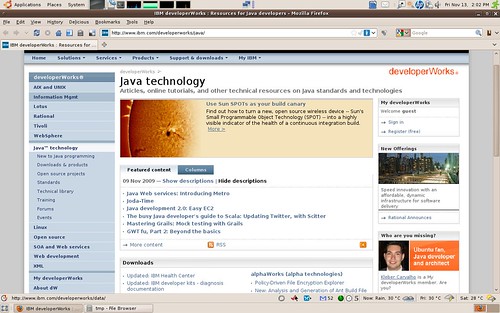I have heard a lot of people worry about the future of Java, MySQL, Netbeans and GlassFish after that Oracle acquired Sun.
Today I read Adam Bien’s Weblog :
…Oracle GlassFish Server is part of the Oracle Fusion Middleware application grid portfolio and is ideally suited for applications requiring lightweight infrastructure with the most up-to-date implementation of enterprise Java, Java EE 6, and Java Web services. Oracle GlassFish Server complements Oracle WebLogic Server, which is designed to run the broader portfolio of Oracle Fusion Middleware and large-scale enterprise applications…”Read the whole paper.
I admire Sun. They created those awesome products such as Java, Netbean, GlassFish, VirtualBox and son on, however I have to admit that Sun business model wasn’t working.
If you still believe that Sun business model worked, answer me, why did shareholder approve to sale Sun to Oracle?
Do you sell your company or company share if it is still profit?
No, I don’t. I just sell it if I have losses.
I’m not concerned about the future of Java, MySQL, Netbeans and GlassFish, however I make sure that Oracle will change the business model behind of these products.
I advise Oracle to keep up the open source communities that maintain these products so beloved by developers and open source enthusiast; however Oracle need to profit through these products. To keep an open source product alive, they need to spend money.
I advise Oracle to keep up the open source communities that maintain these products so beloved by developers and open source enthusiast
How much does IBM spend to keep Geronimo community active? There are a couple of IBM employees working on this open source project.
How much did Sun spend to keep GlassFish or Netbeans community active? There were a couple of Sun employees working on this open source project too.
How much will Oracle spend to keep GlassFish or Nebeans community push on? There are many Sun-Oracle employees working on this open source project too.
In a successful manner open source projects such as Eclipse, Linux, and so forth survive nowadays, because there are a lot of companies investing money, time, and resources in these products. For instance, a couple of IBM Rational products are based on Eclipse. How many companies release hardware and software products based on Linux?
All those companies that are investing in open source products are interested for some reason on these open source products, I can bet the reason is these open source products are helping their business model.
Open source products are helping their business model.
I think Oracle plans the same to GlassFish. The same that IBM does about Geronimo or WebSphere Application Server Community Edition (based on Geronimo).
The same that Red Hat does about its Red Hat Enterprise Linux and Fedora as well as SUSE pair does on SUSE Linux Enterprise and openSUSE.
I’m not worry about, since now Oracle GlassFish Server is part of the Oracle Fusion Middleware application grid portfolio. As Java developer and Architect I really support that Oracle and IBM offer for purchase their application servers and spread their Java portfolio.
I really want that Oracle to keep up the open source communities that maintain these products so beloved by developers and open source enthusiast, and also improve them (products and communities)
Kleber Rodrigo de Carvalho
